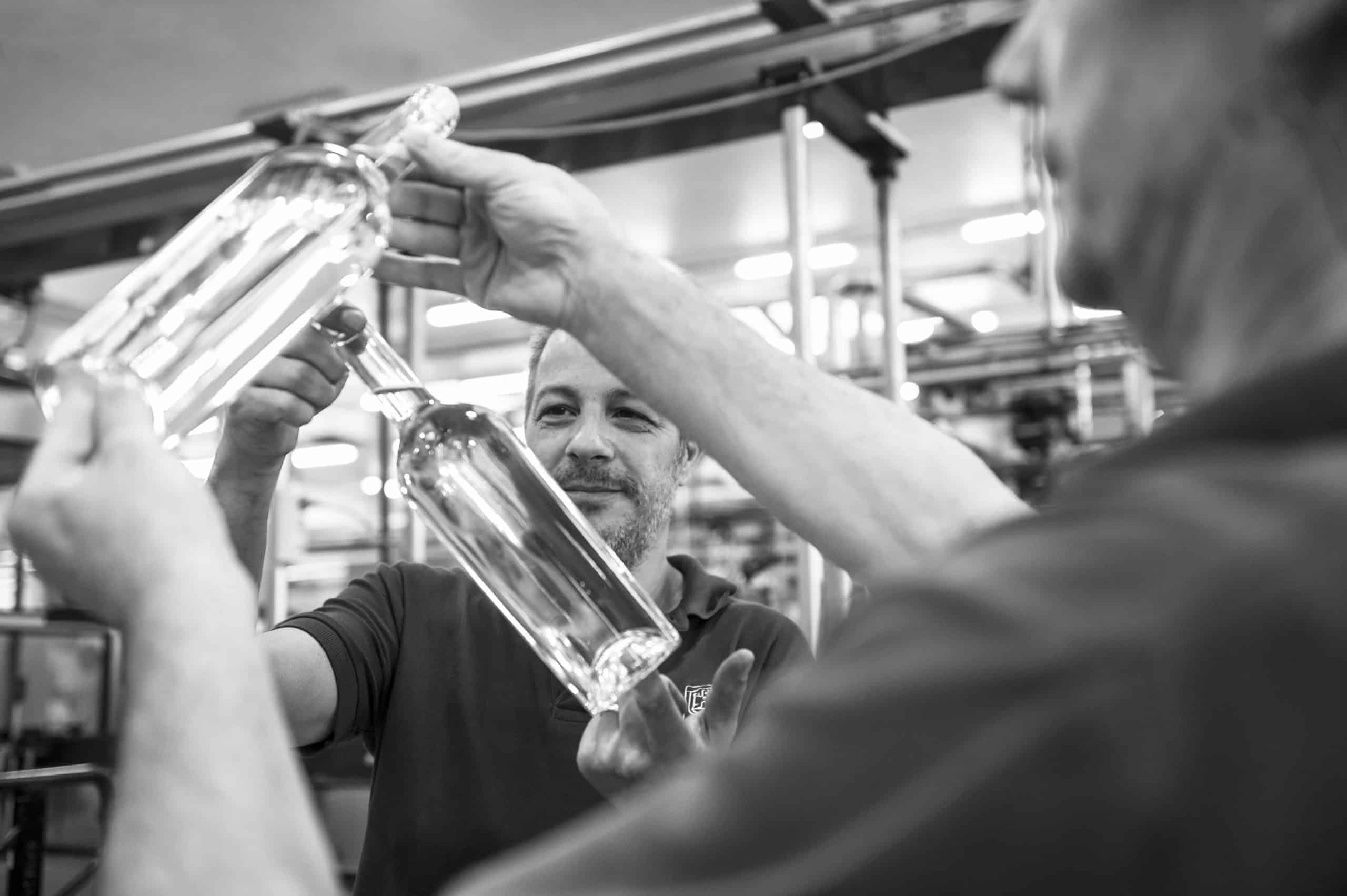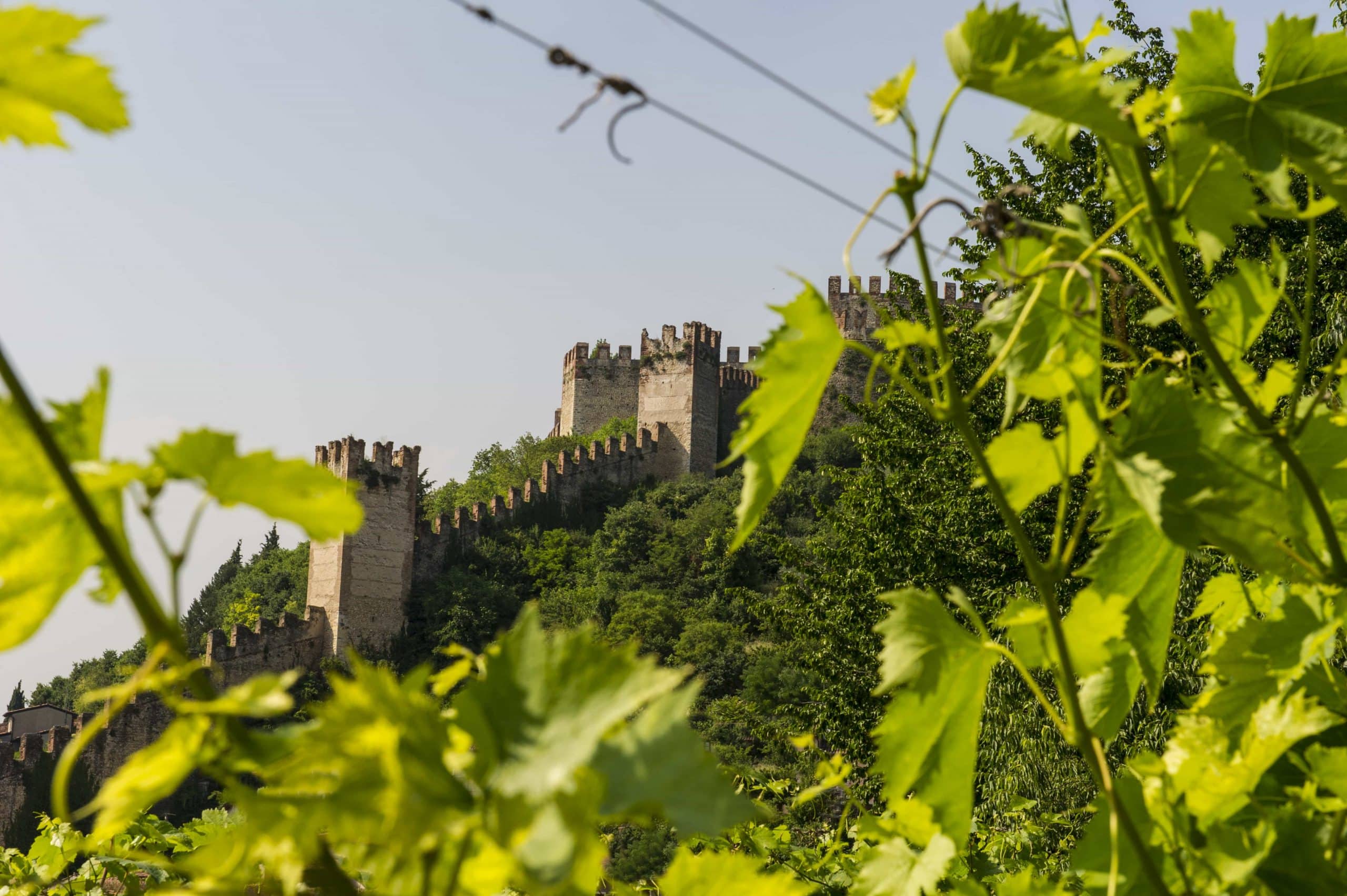SUSTAINABILITY
a daily commitment
1

OUR COMMITMENT TO A SUSTAINABLE VITICULTURE
A fully-integrated system monitors each vineyard and its surrounding environment, making it possible to create, and share with each member-grower, a protocol for precision fertilisation.
This programme privileges drip irrigation-also known as localised irrigation or micro-irrigation, which directs water precisely where and when it is needed. Applying the water close to the root zone reduces evapotranspiration and depth drainage, resulting in significant water savings.
A network of automated weather-monitoring stations has covered the growing area since 2002, and contributes to the creation of a real-time, reliable databank that allows punctual dissemination of vineyard-protection bulletins.
These catchment basins help to cope with the overall rise in temperatures, with drier and hotter summers. Some Cantina di Soave growers use such collection systems for rainwater and micro-springs for emergency water sources in case of drought.
Management and fertilisation of the soil, and preservation of micro-flora, are increasingly seen as significant factors that assist the vineyard in becoming no longer simply a vulnerable object but an active entity fully capable of robust defence and of adapting to the environment.
In order to reduce the impact of man on the environment and to favour economically-sustainable crops, Cantina di Soave has adopted the Technical Guidelines for Integrated Defence issued by the Veneto Region’s Plant health Unit and approved by the integrated Defence Group at the Ministry of Agricultural, Food, and Forestry Policies. The guidelines lay out criteria for intervention, agronomic measures, and treatment strategies for the protection of crops from pest infestation.

2

OUR COMMITMENT TO ADOPT PACKAGING THAT RESPECTS THE ENVIRONMENT
Cantina di Soave has begun using the Green Leaf closure on bottles of a Soave DOC for the English market. This innovative glass bottle seal uses some 64% less aluminium than similar closures, and it can be completely removed from the bottle, thus facilitating its recycling. Another advantage is that it takes 60% less space during shipping, compared to the traditional cork, and therefore reduces CO2 emissions into the atmosphere.
Using RafCycle technology, Cantina di Soave is deepening its commitment to achieving a truly un’circular economy. Under the rubric of a “green commitment,” collaboration with the UPM Raflatac company involves recycling the siliconed backing of self-adhesive bottle labels, which are then turned into new paper products by the UPM paper mills. Over the last three years, from the launch of this project, Cantina di Soave has recycled 62 tonnes of silicone paper. By recycling instead of disposing, the winery has saved 2,738,100 MJ of energy, equivalent to the energy needed to illuminate the Eiffel Tower for 15 months.
Cantina di Soave has also greatly focused on reducing the weight of packaging. The current Bordeaux bottle has the same aesthetics and physical properties of previous models, but less weight , 370 grams instead of 410. In 2019, the winery utilised 13 million bottles, saving 520,000 kgs of glass. For sparkling wines, the Collina bottle was adopted, which is slightly lighter than the previous bottle used. The reduction of 120 grams of weight translates into saving 48,000 kgs less glass per year, plus savings in disposal and shipping.
3

OUR COMMITMENT TO REDUCE ENERGY CONSUMPTION
One subject that has always been of crucial importance to the Verona-based wine producer is energy savings in its production process. In fact, the winery is constantly investing in new equipment and facilities in order to reduce energy costs, to improve its efficiency every year, and to become increasingly sustainable. In addition, the enormous expansion project and the re-organisation of the production-logistics operations were designed to “perform green.”
Use of machinery with high energy efficiency: the new bottlefilling lines use less than a third of the energy of those that were standard in the 1990s.
Sensors in the working areas regulate and adjust lighting, thus significantly reducing electrical consumption compared to past levels.
Energy from renewable sources: a solar panel installation ensures peak energy production of approx. 105KW, and another installation produces hot water for cleaning.
New water management systems collect and treat cleaning water, while wastewater from winemaking is processed by a new purifier that has the capacity of serving a community of 20,000 inhabitants.
The winemaking waste products can be considered to result in very low environmental impact, inasmuch as they are sent, by law, to other companies, such as distilleries, for re-processing. In fact, all the pomace, stalks, and lees derived from pressing and winemaking are shipped to such processors.
Energy-saving equipment plays a significant role at the winery. The administration building, for example, is fitted with an external jacket and special frames that are designed to enhance energy production.
The roof is completely insulated, and one section bears 437 solar panels, equivalent to 717 square metres, which provide renewable energy used by the automated warehouse.
In addition, a new rainwater management system directs the water from the roofs into “calming tanks,” which in turn release it into the ground through special culverts. Thus, clean rainwater enters the soil, and the aquifers, instead of speading into the surroundings.
Solar panel installations produce hot water for several administration sections, making them self-sufficient

4

OUR COMMITMENT TO PRESERVE THE HISTORY OF OUR AREA
The recent expansion and restructuring project of our headquarters in Viale della Vittoria has an important social value as well. Investments were made in public works projects that will benefit the entire community, primarily impacting transitability and green zones in the areas around the winery.
In order to improve the perception of the urban landscape, the location of green zones and adjacent parking areas was carefully designed to improve the appearance of the entire east façade of the winery, thus upgrading the visual impact for those entering Soave’s town centre.
The green area inside the perimeter of the Viale della Vittoria facility too is designed to positively impact the air and the internal environment, by reducing glare from the sun and influencing the microclimate.
The Castello di Soave’s imposing circuit of walls completely encircles the medieval village, an asset that Cantina di Soave is committed to protect. It thus designed a special bottle for a limited edition of Soave Classico Rocca Sveva, its most iconic wine in its most prestigious brand. Part of the proceeds from its sales has already been donated by Cantina di Soave to the Commune of Soave for restoration of the walls.
5

OUR COMMITMENT TO PROTECT AND PROMOTE OUR SURROUNDING ENVIRONMENT
A botanical garden flourishes right on the slopes of the Rocca Sveva winecellar, containing more than 150 species of plants, shrubs, and trees, all catalogued; originally it was the park of the ancient villa that lies at the centre of Rocca Sveva and is still its very soul. The garden borders with the experimental vineyard, where research is carried out on local native grape varieties and on vine training systems.
A true picnic amidst centuries old trees and plants, vineyards and flowers, a magical spot to enjoy a refreshing glass of wine, paired with scrumptious snacks a wine experience in a perfectly ecological style, and in full respect for and in harmony with nature.
An adventure on horseback amidst the scents, the landscape, and the captivating beauty of this enchanted area. A slow-paced wine experience winding through the Soave Classico hills and their vineyards, an utterly unique introduction to the beauty of our own corner of earth.
An itinerant tasting surrounded by the verdant luxury of the botanical garden, immersed in story-book fragrances and flavours. The wines are presented according to their relationship to plants and trees in the garden itself, in a novel display of biodiversity.


